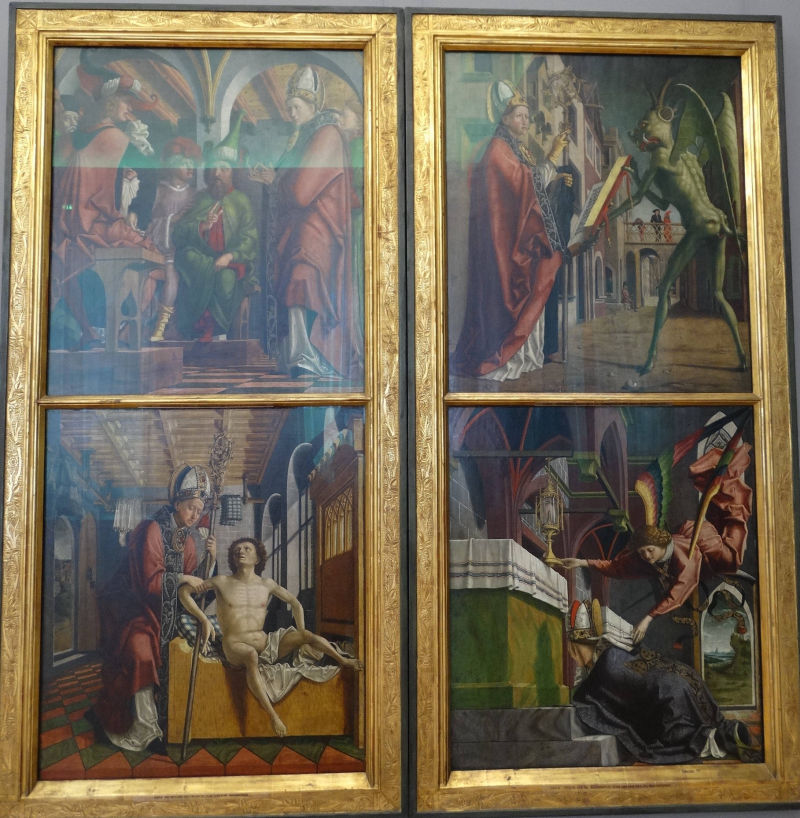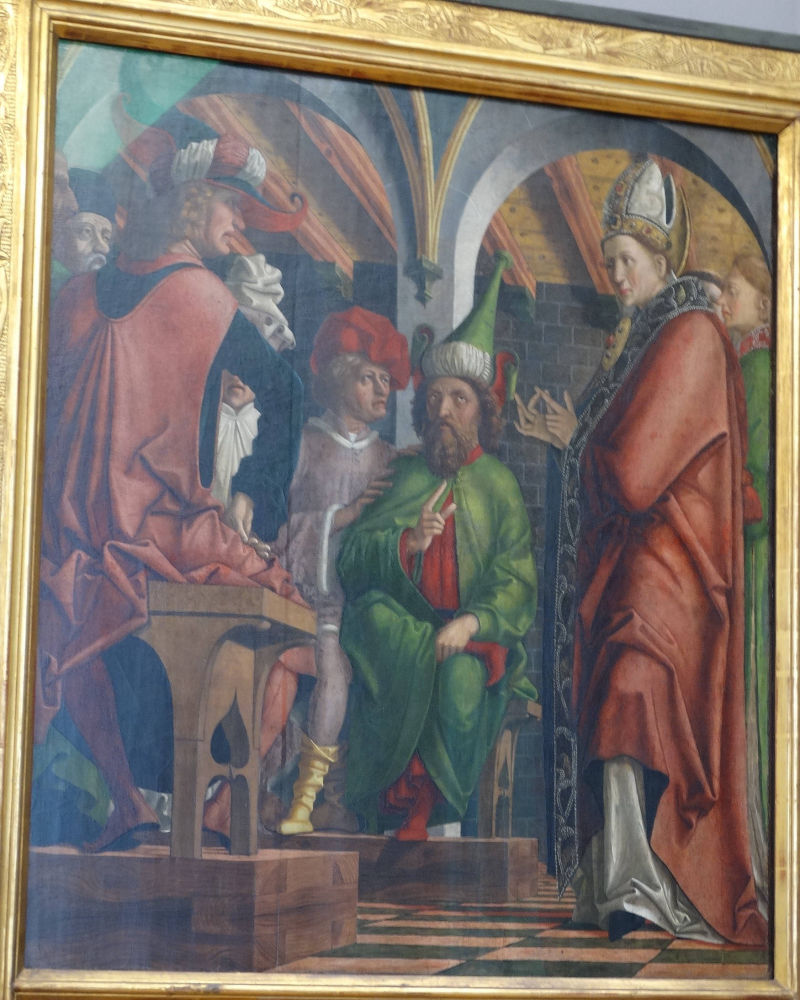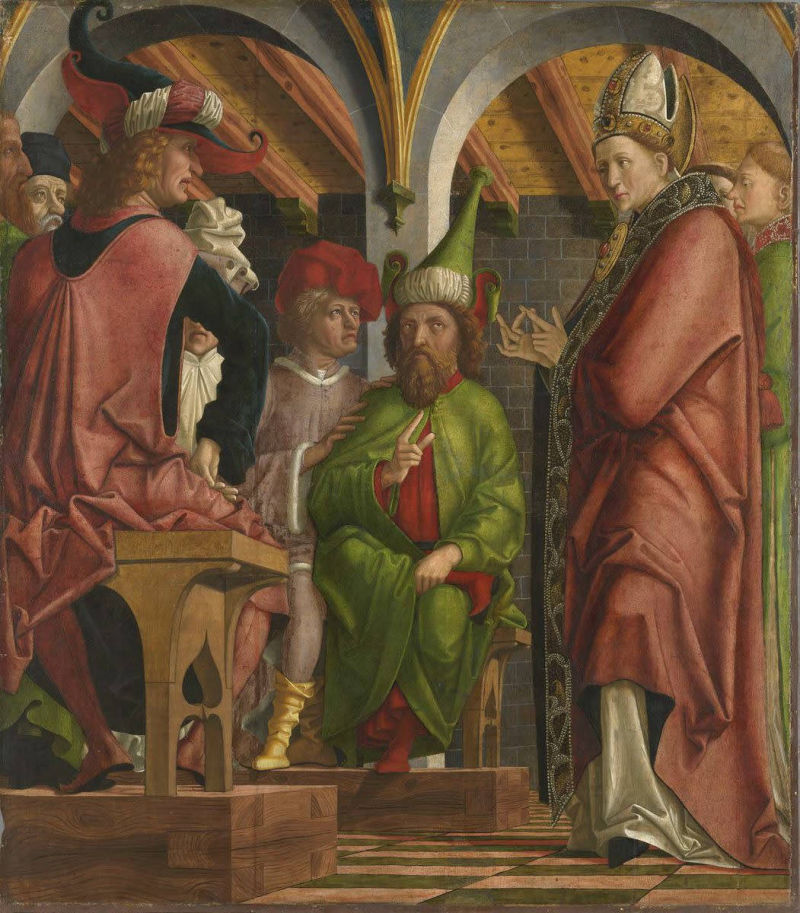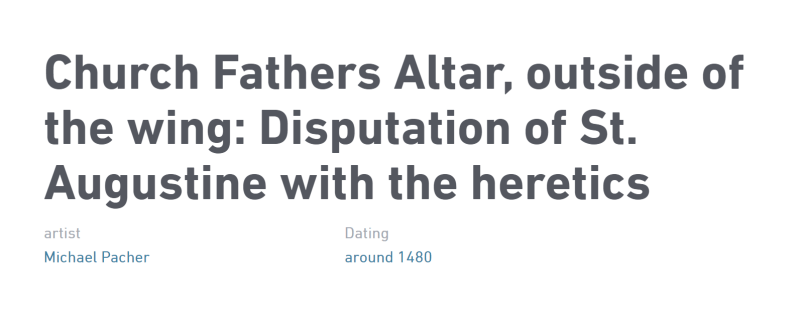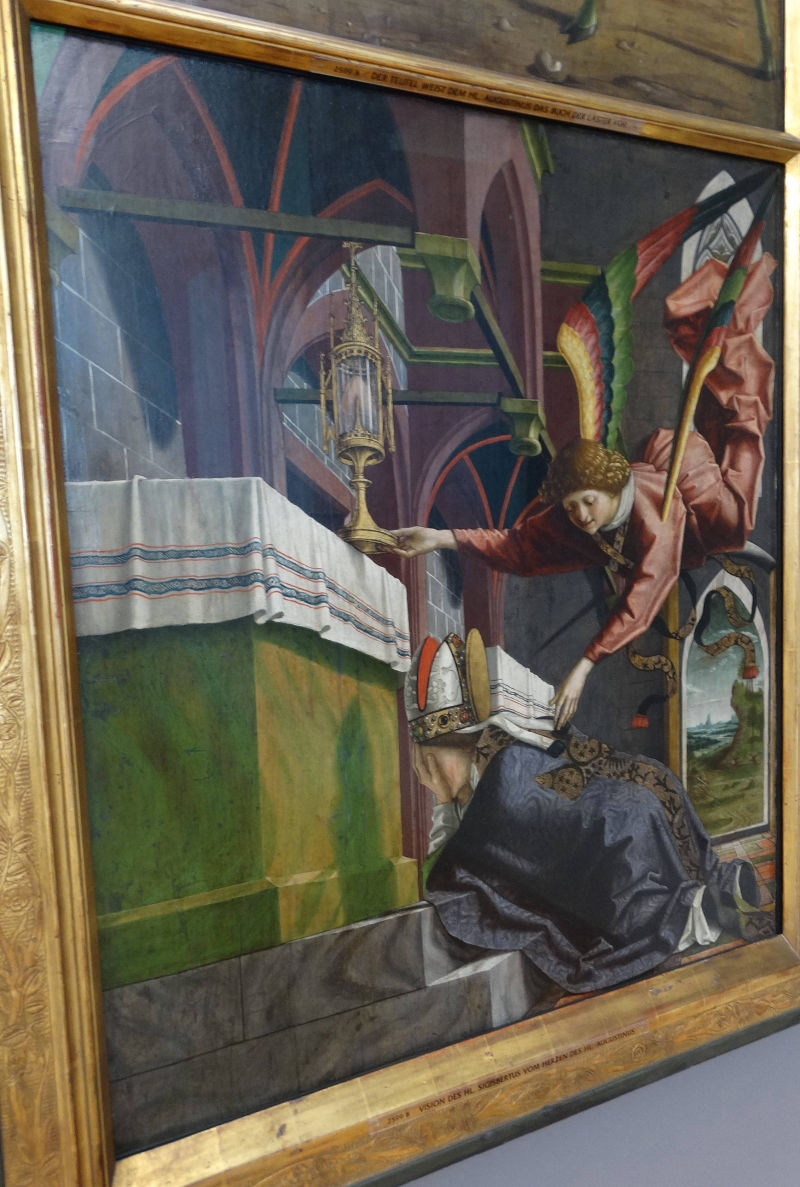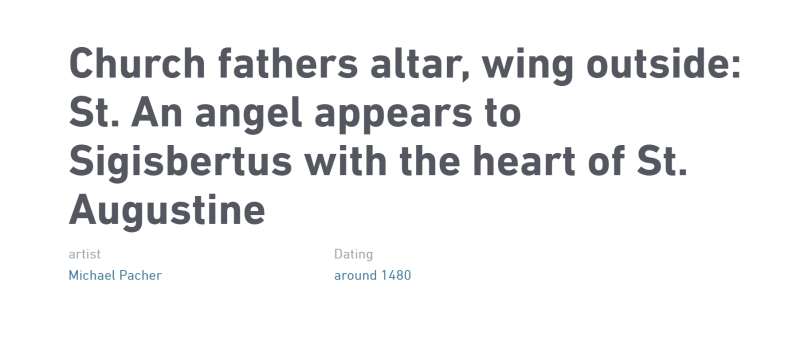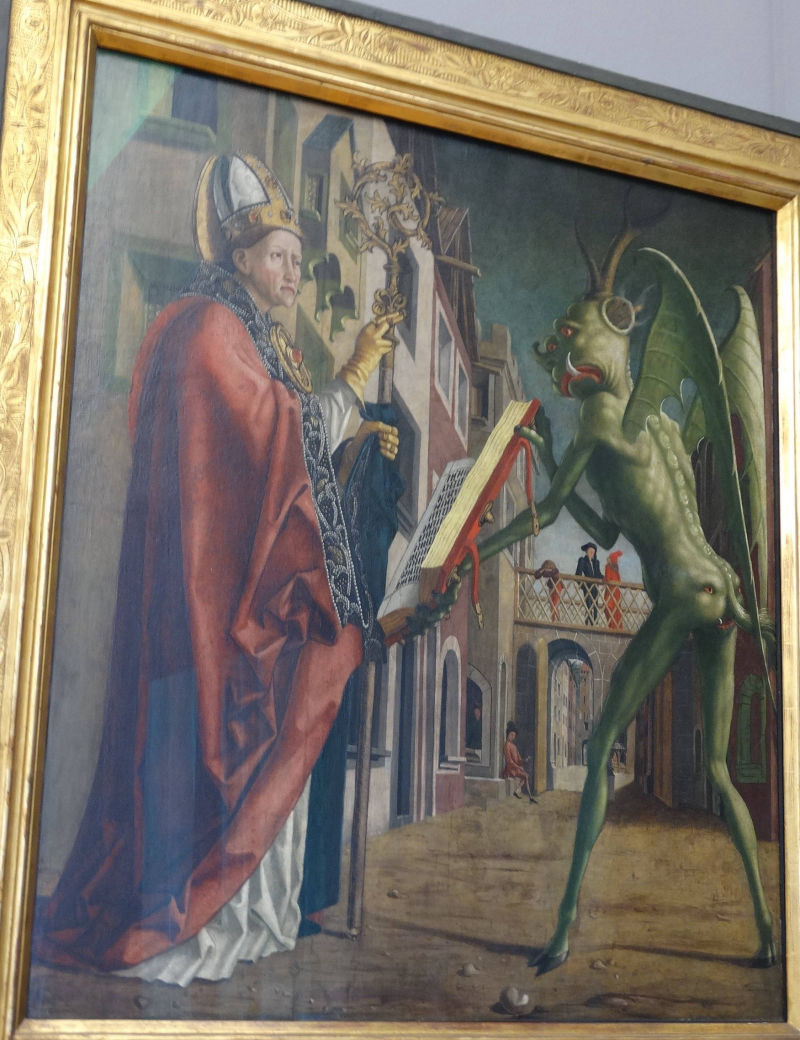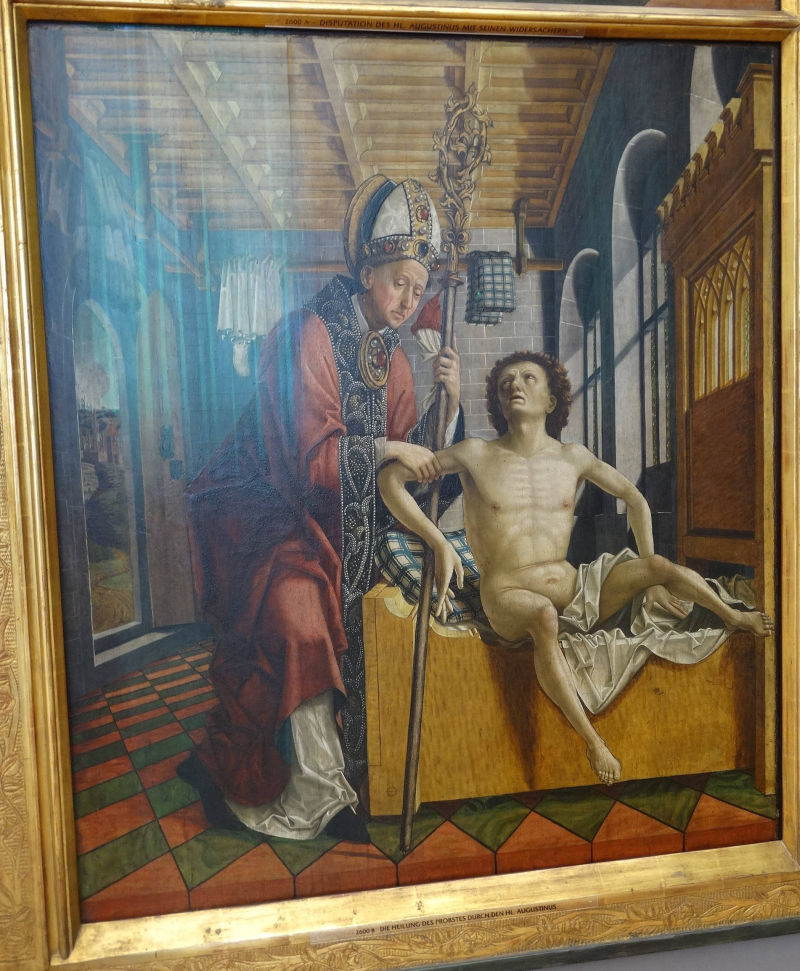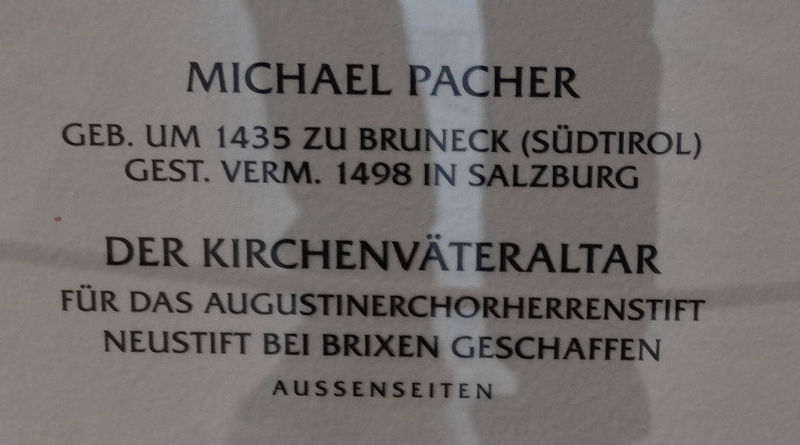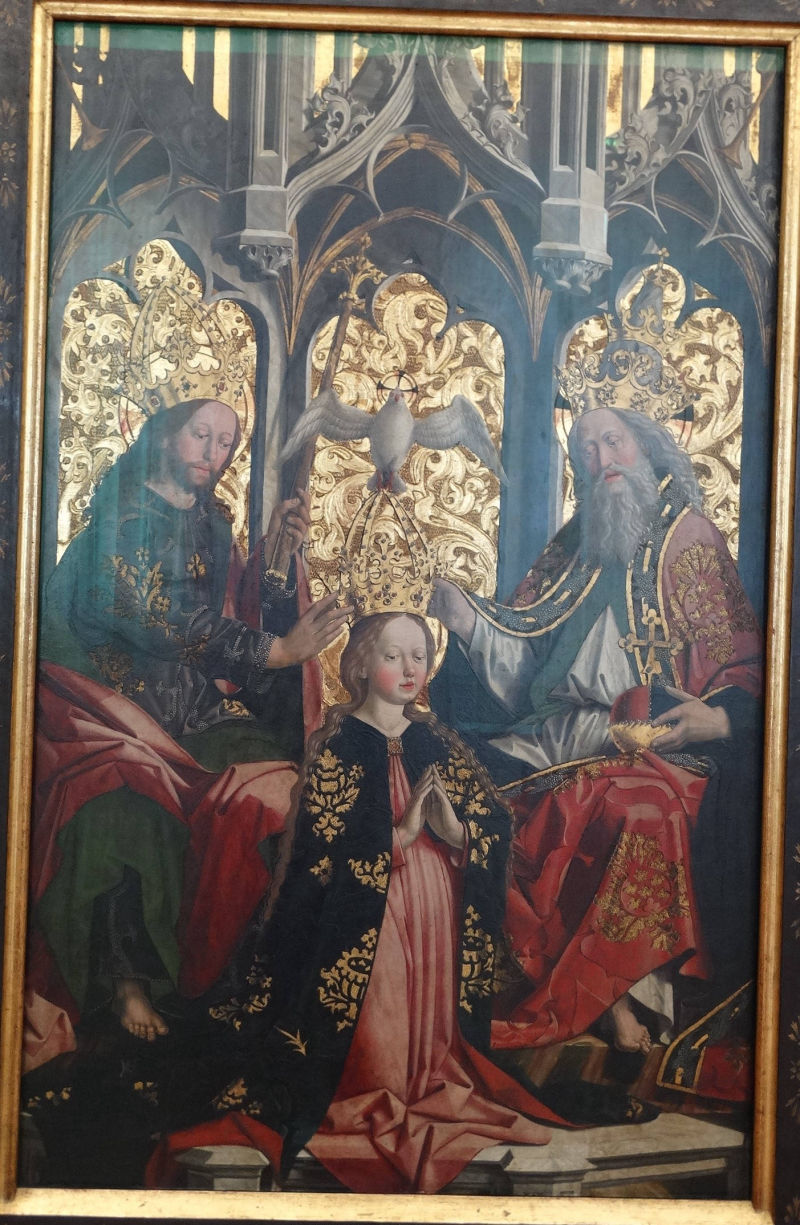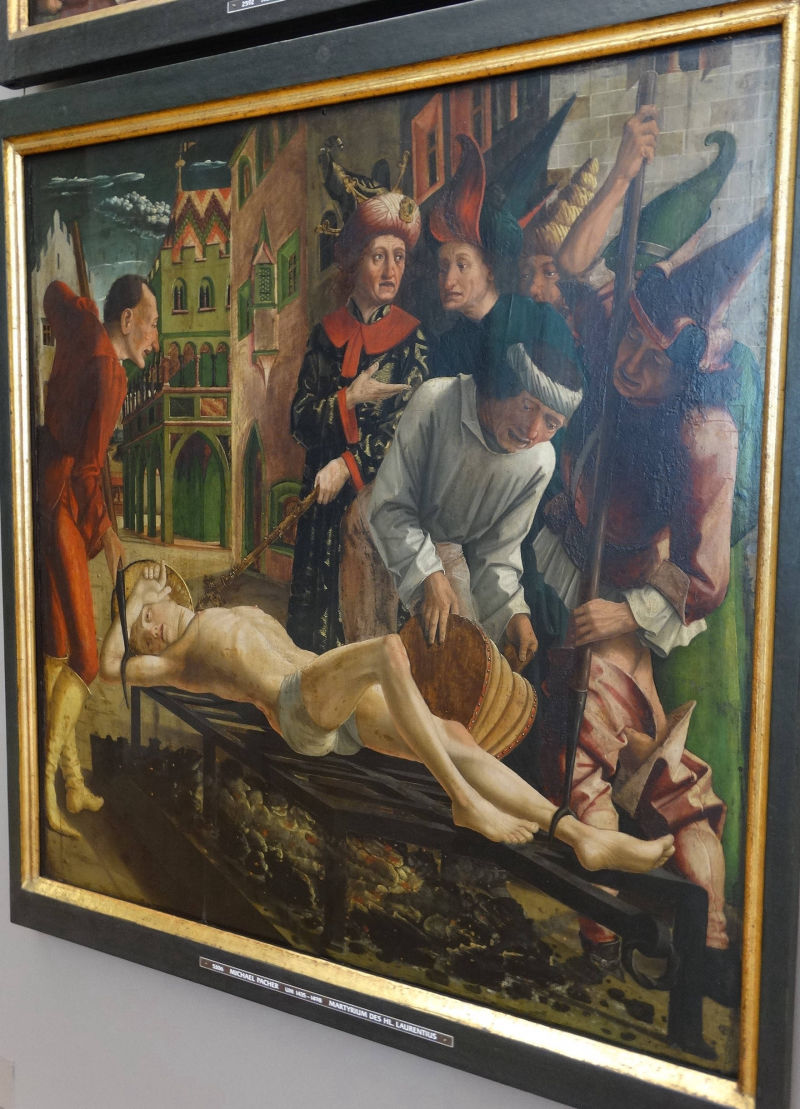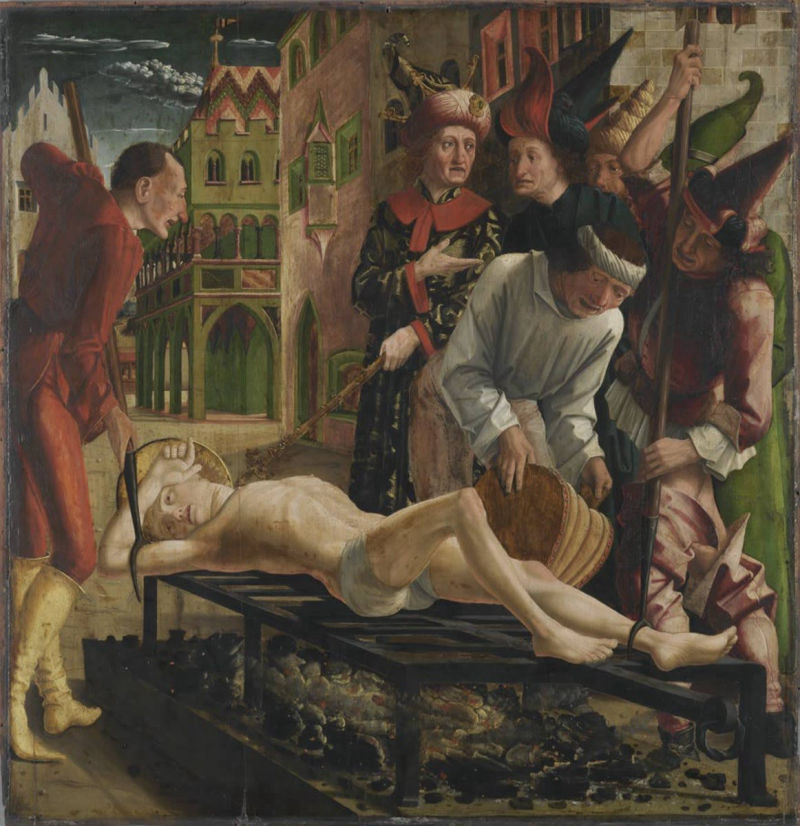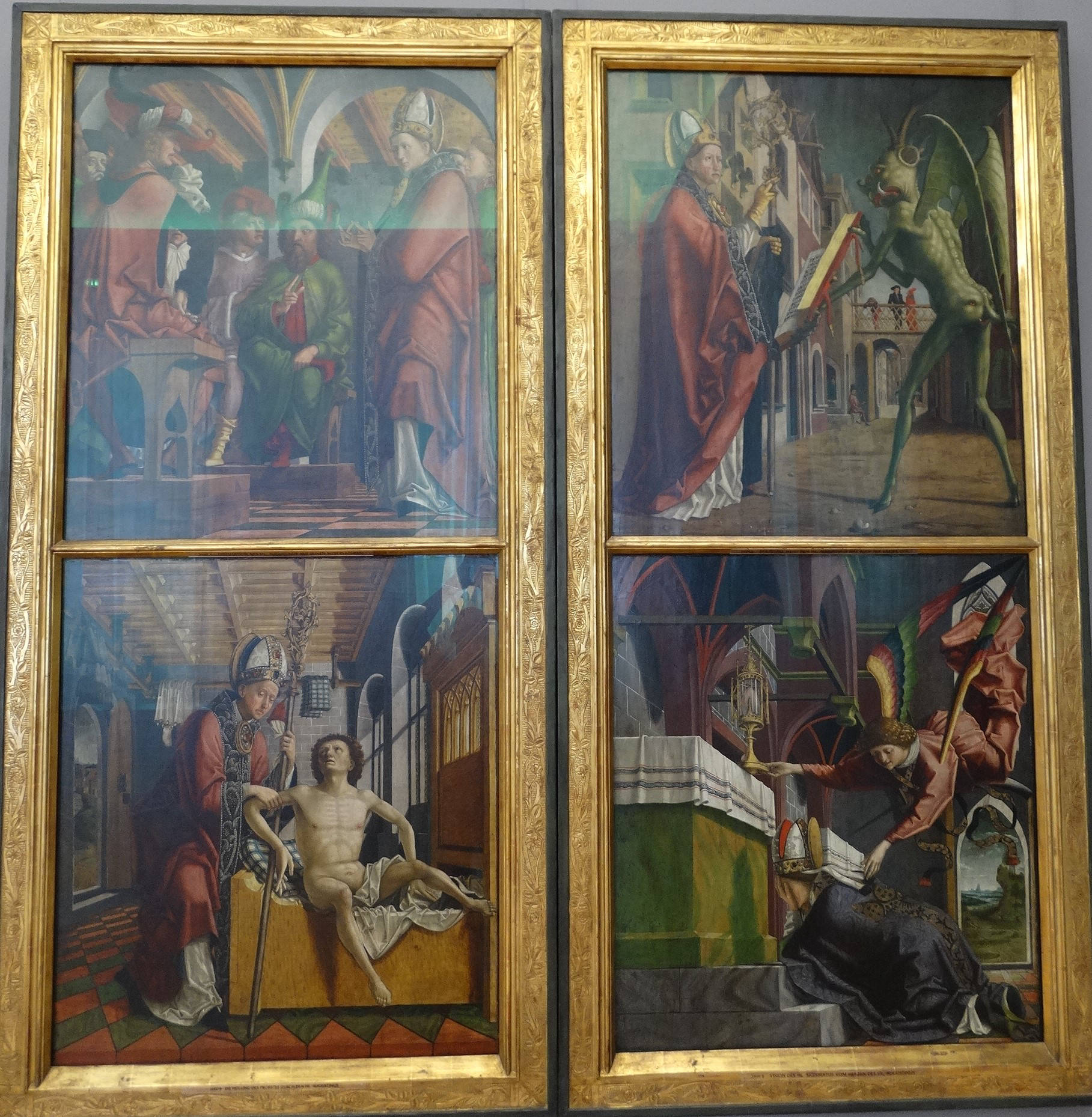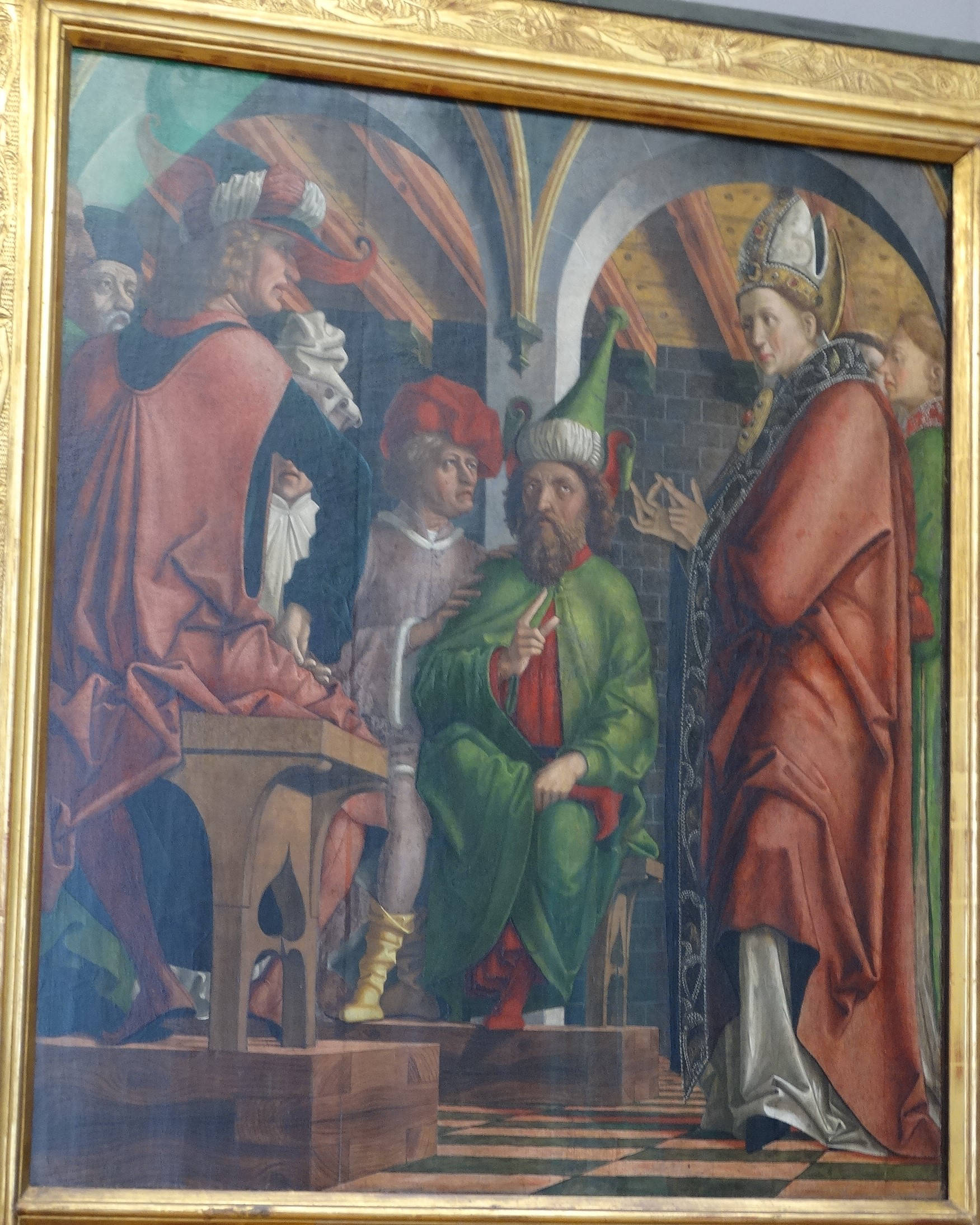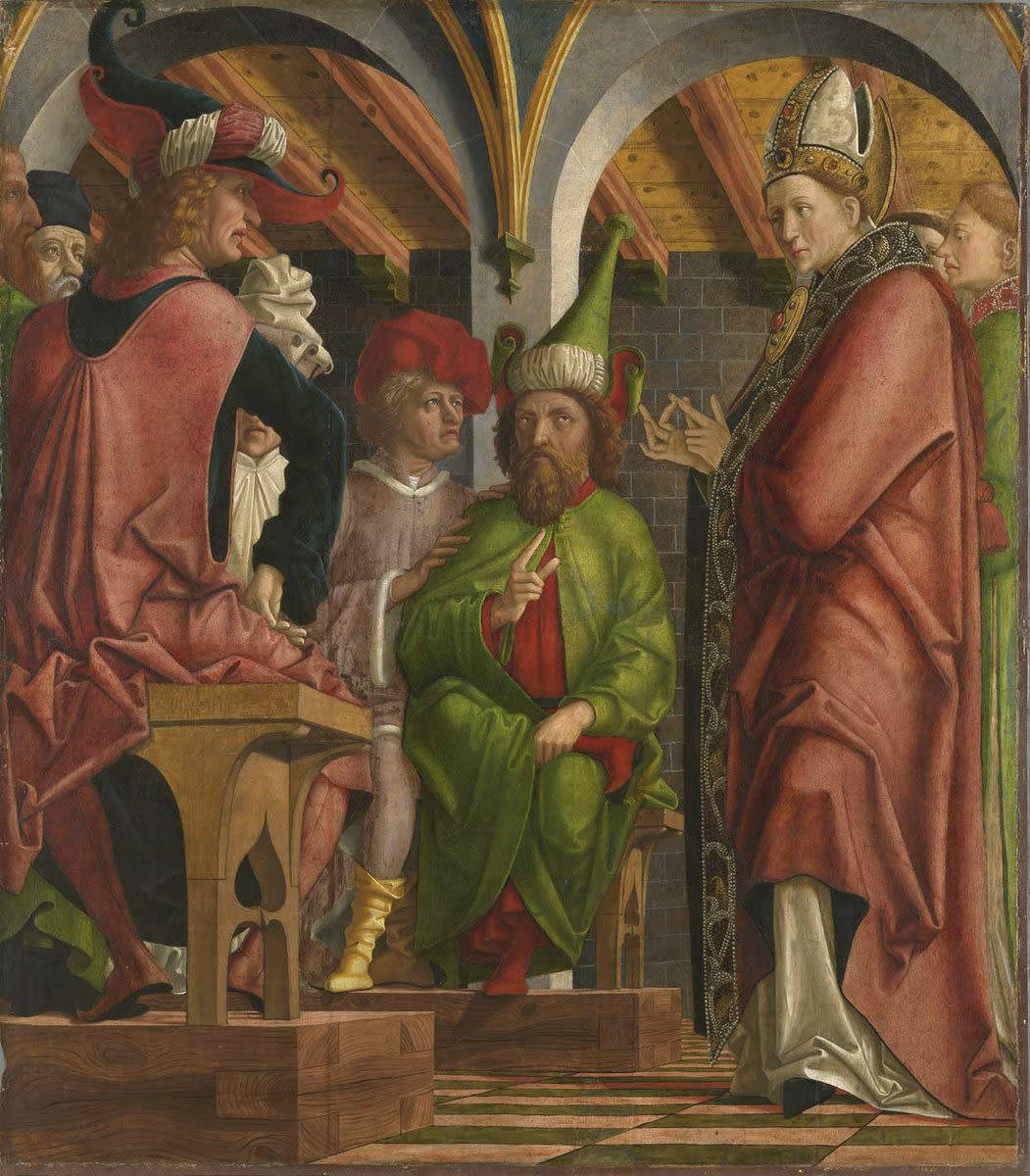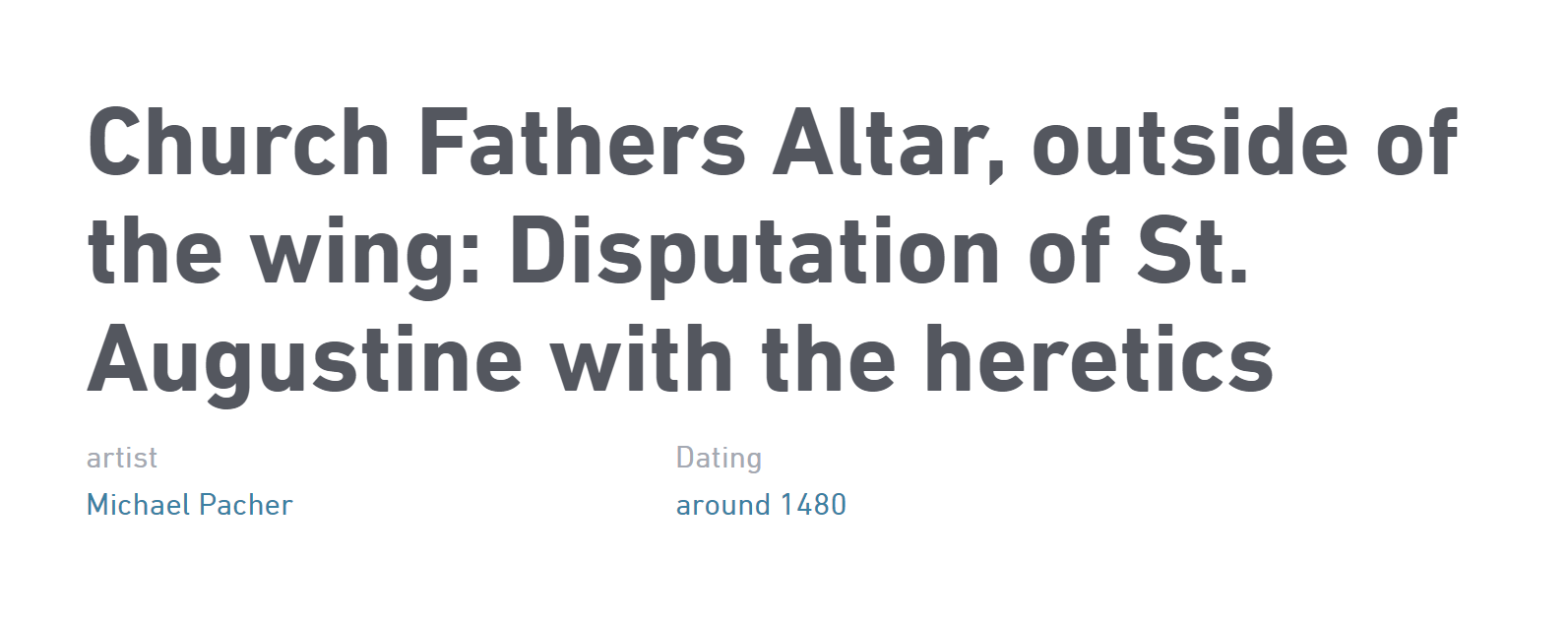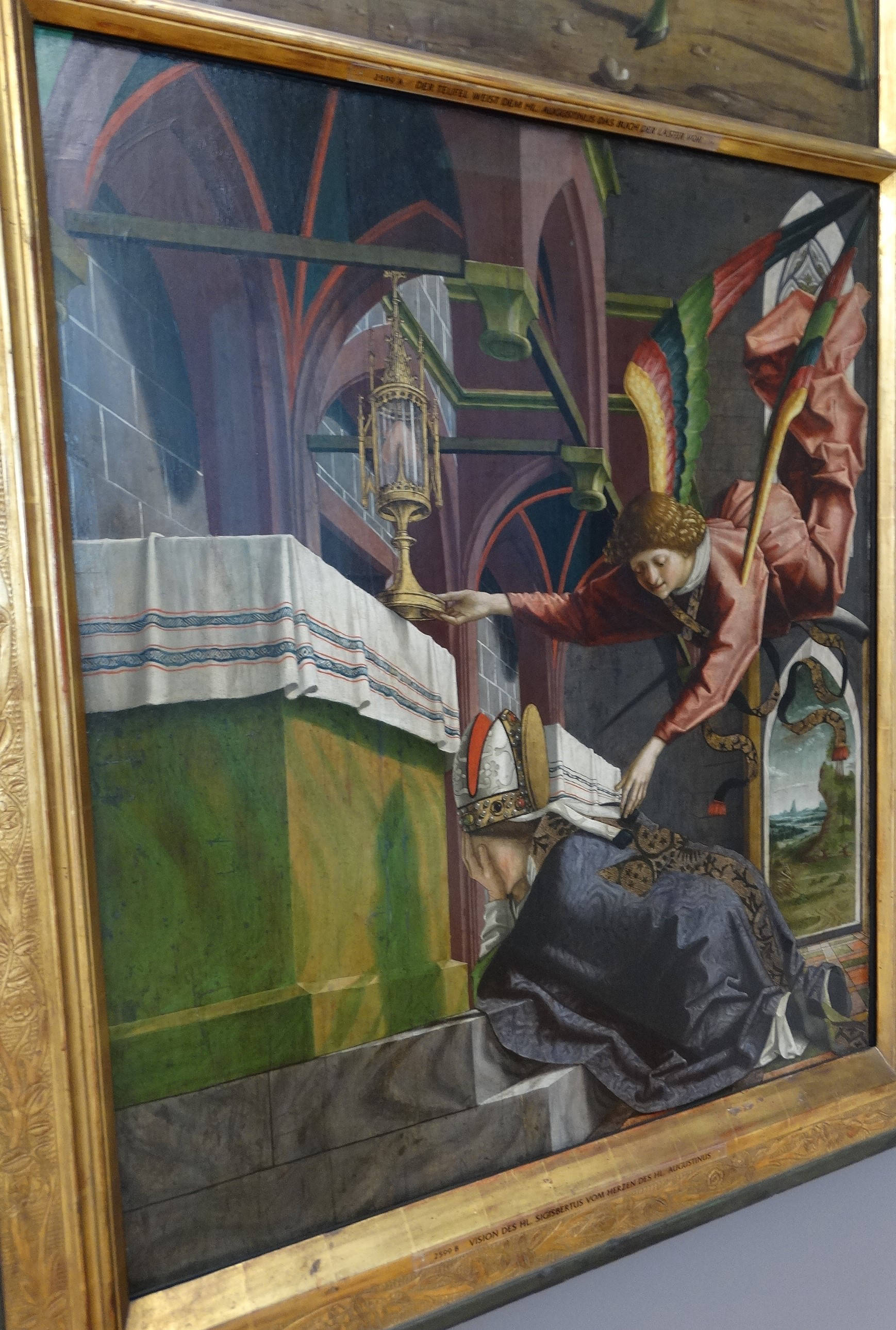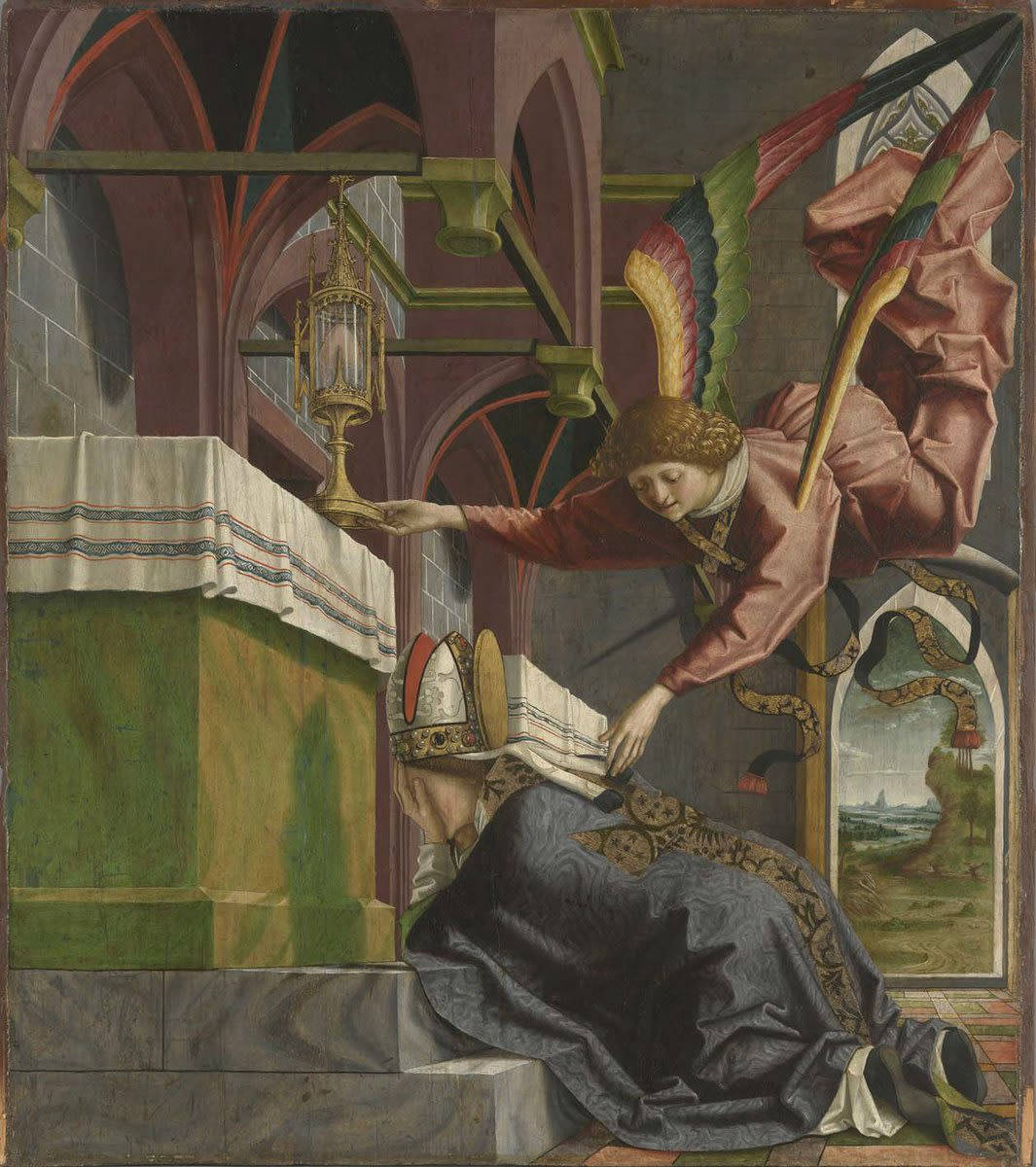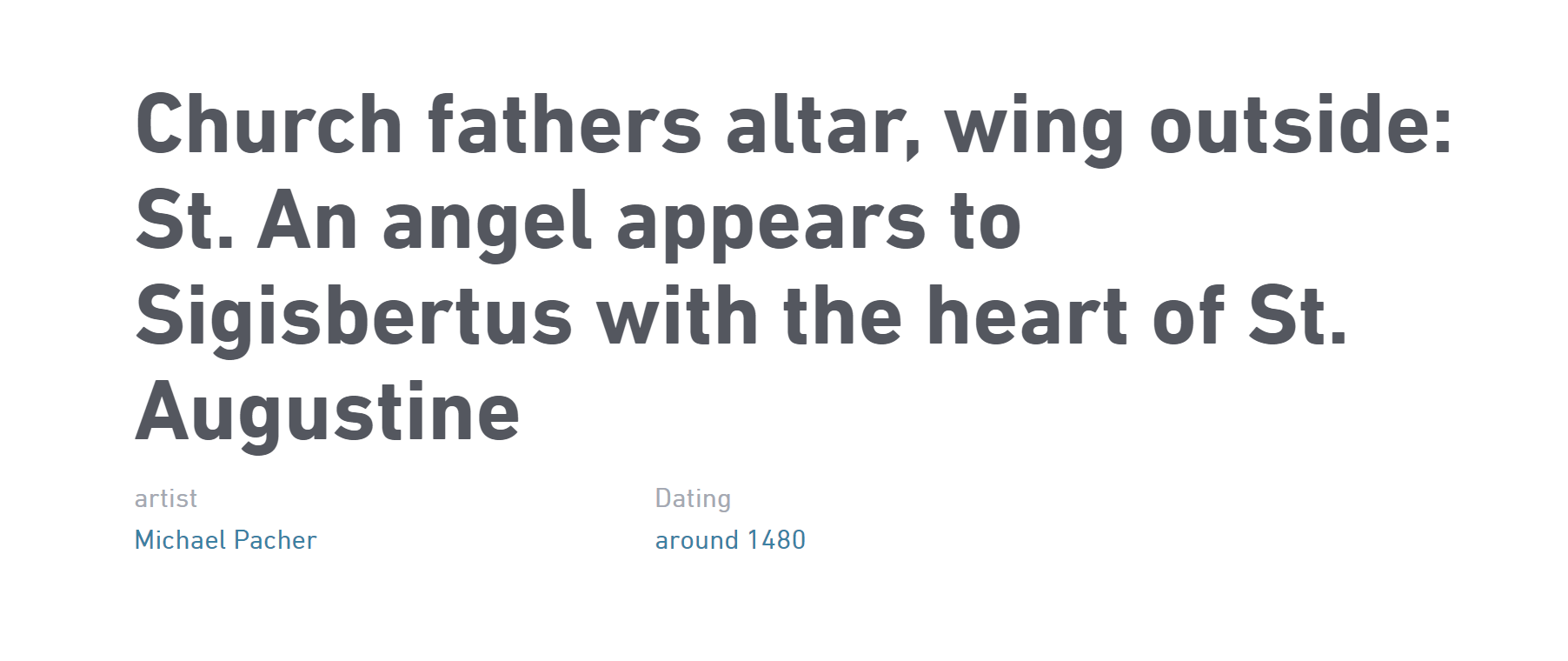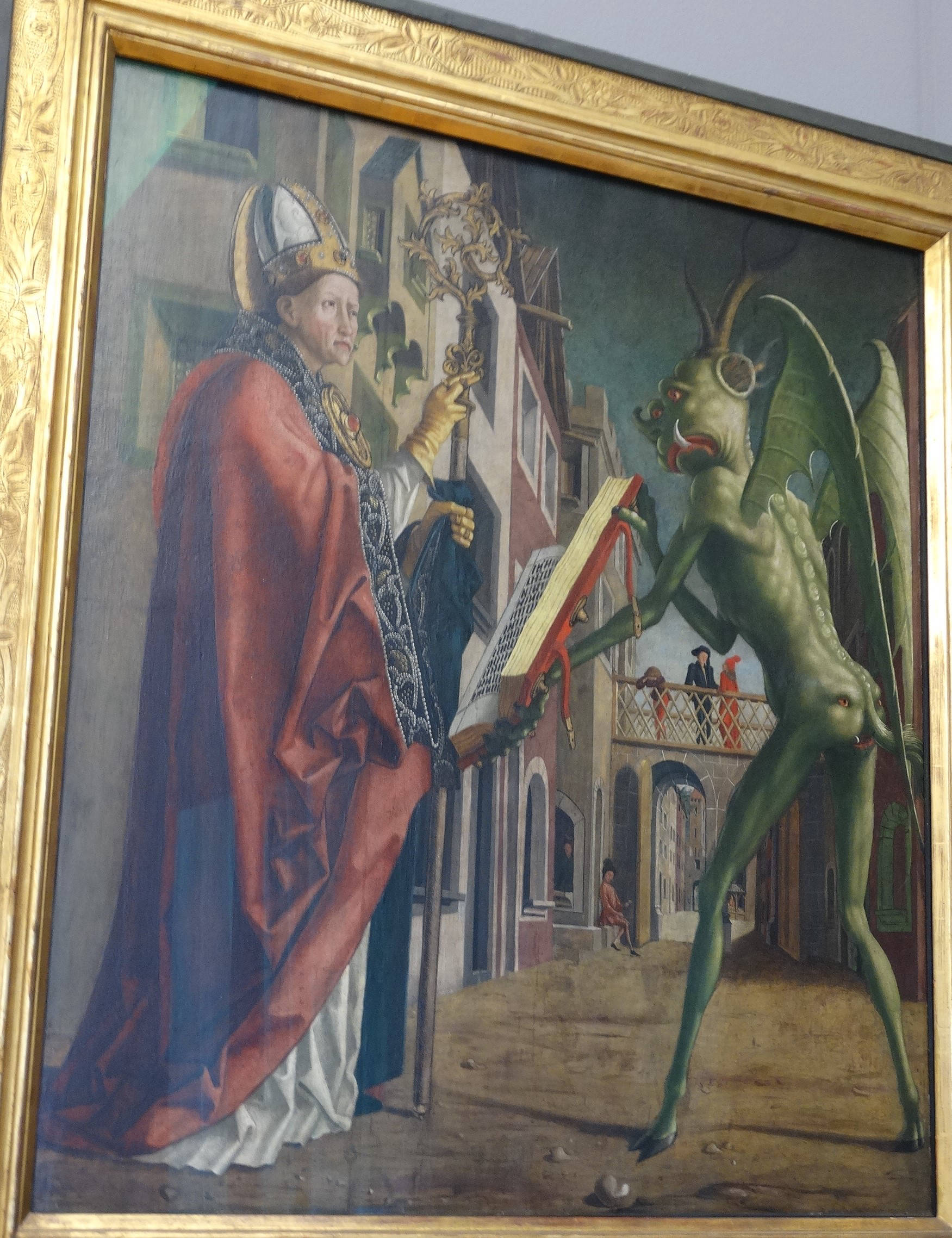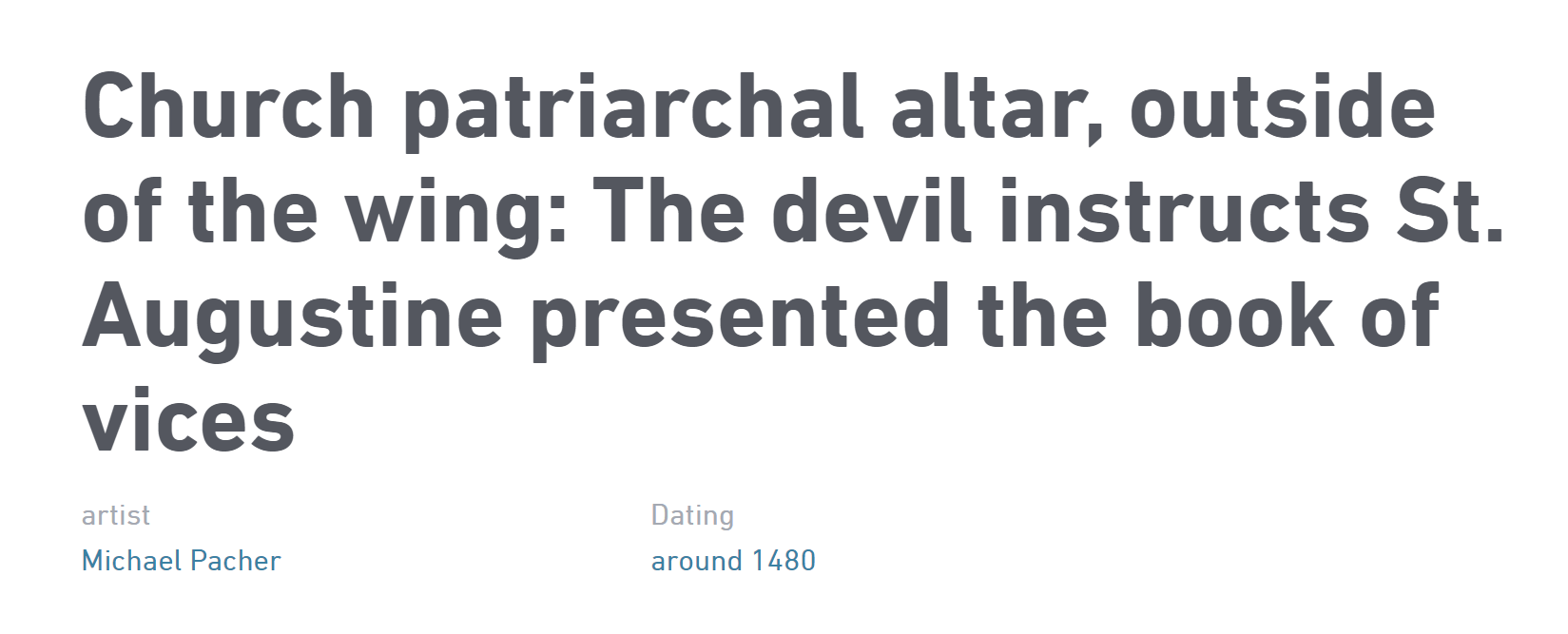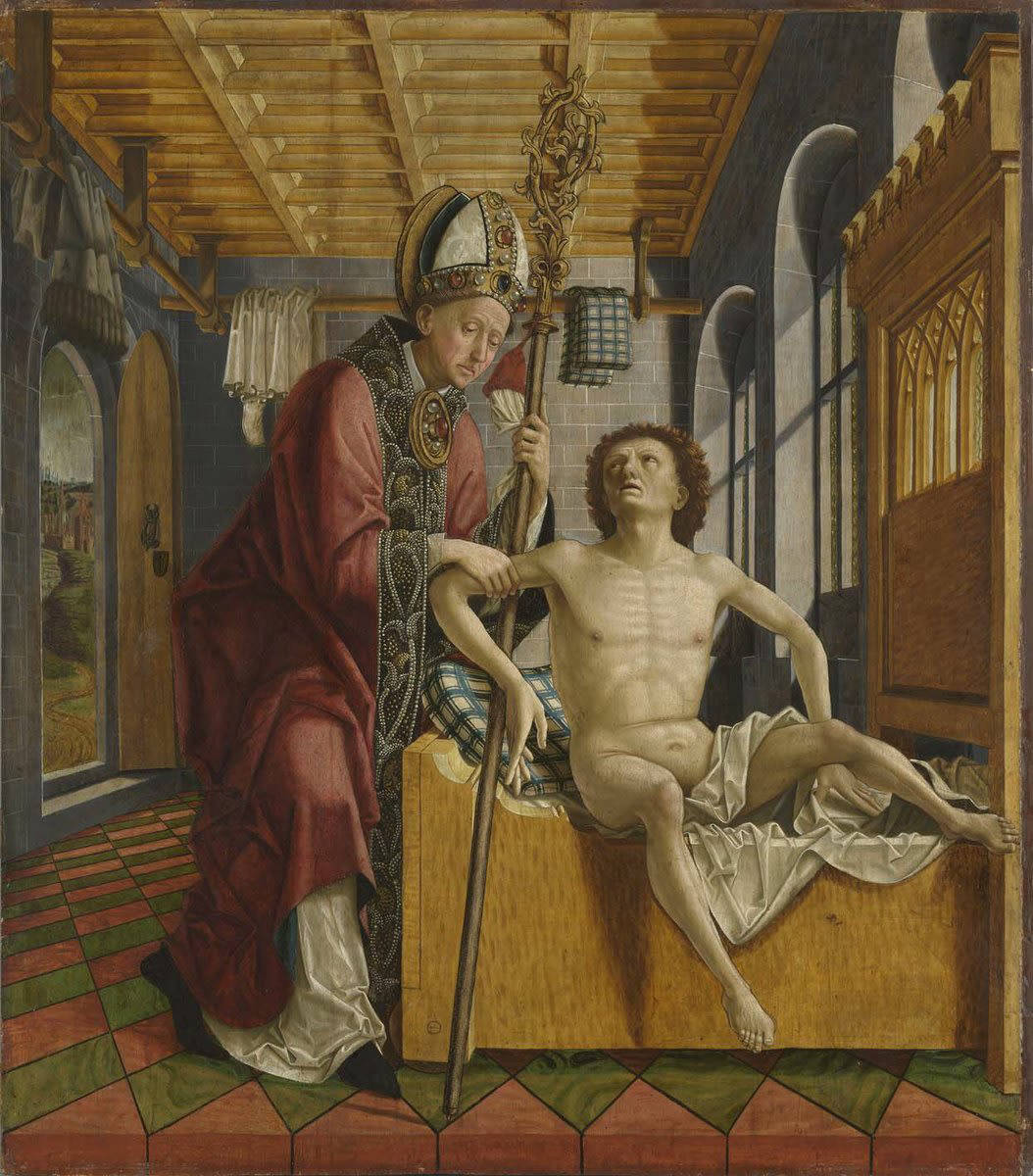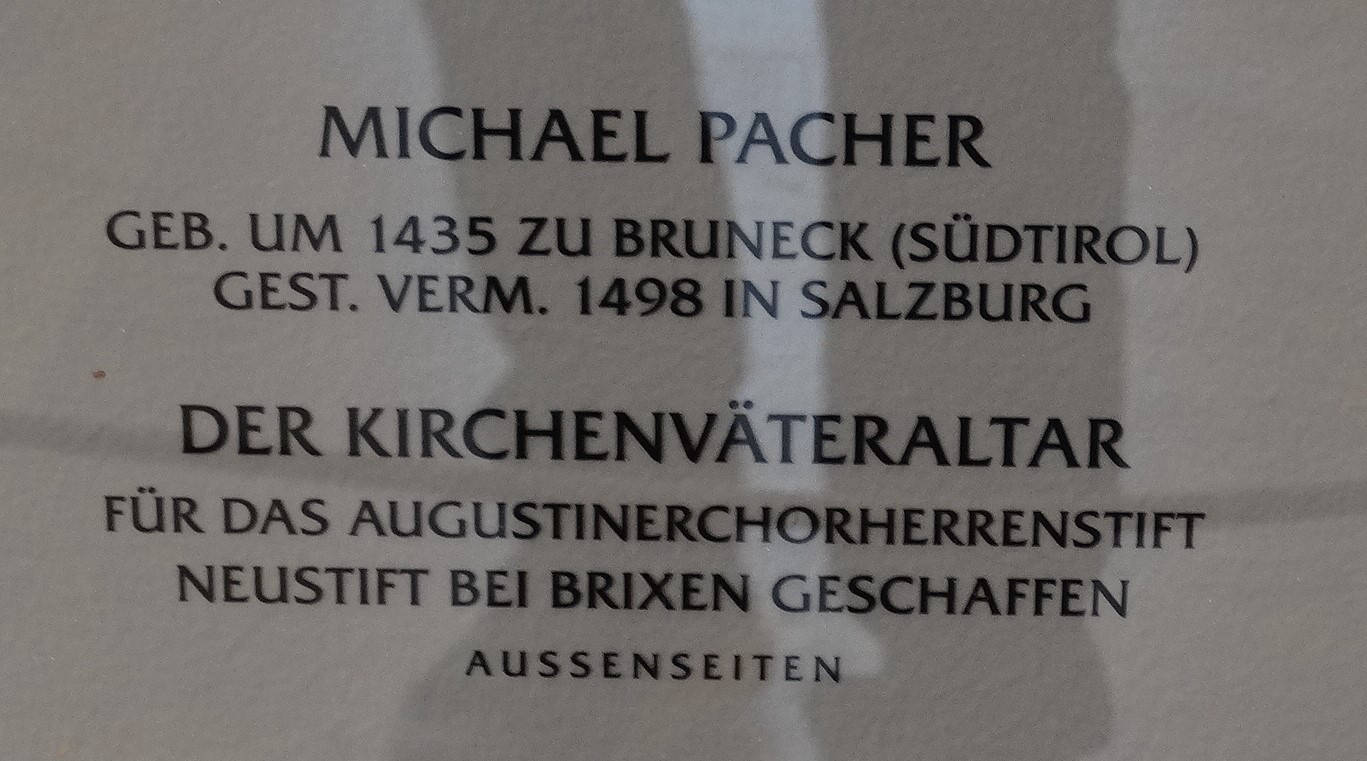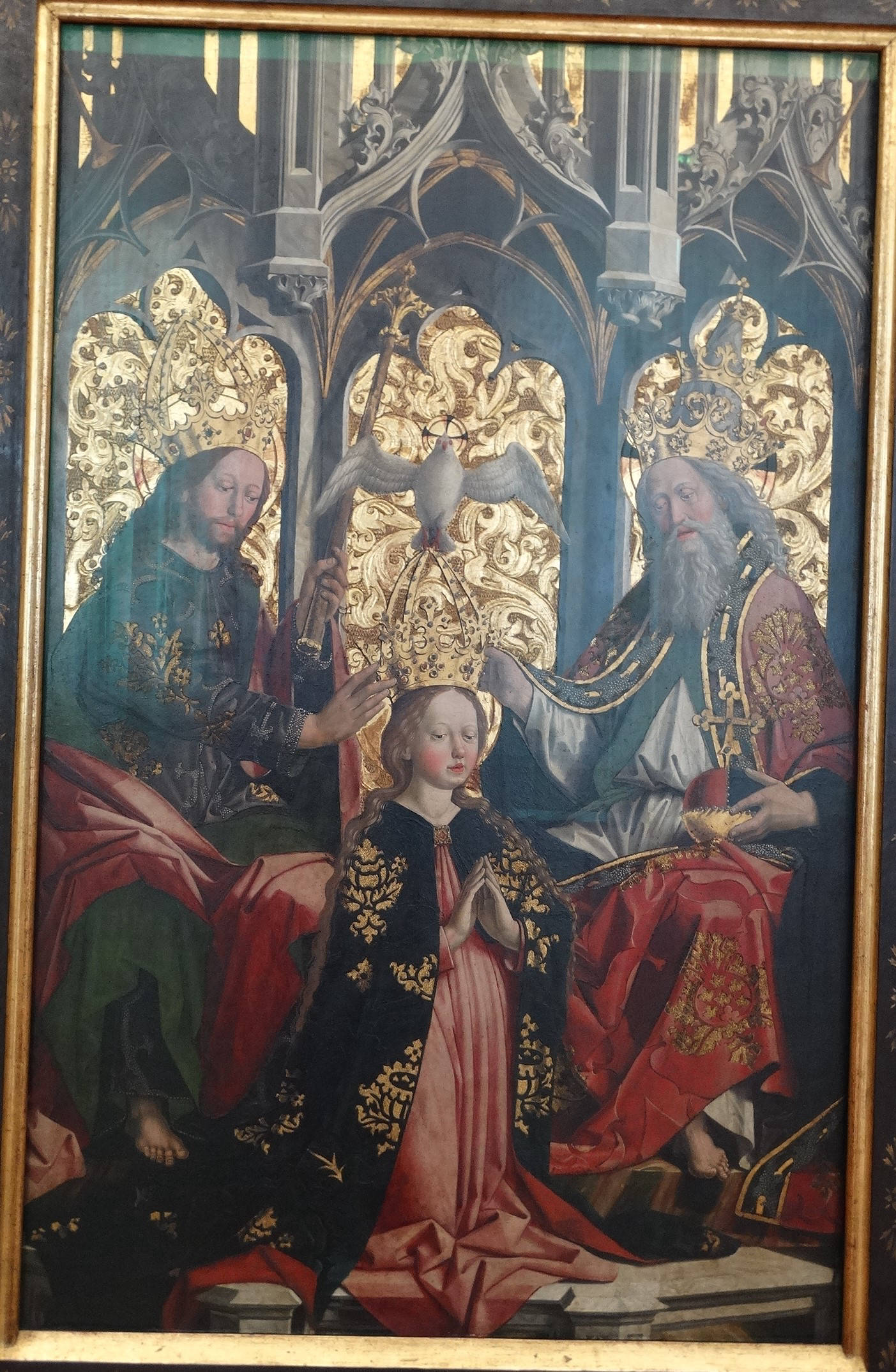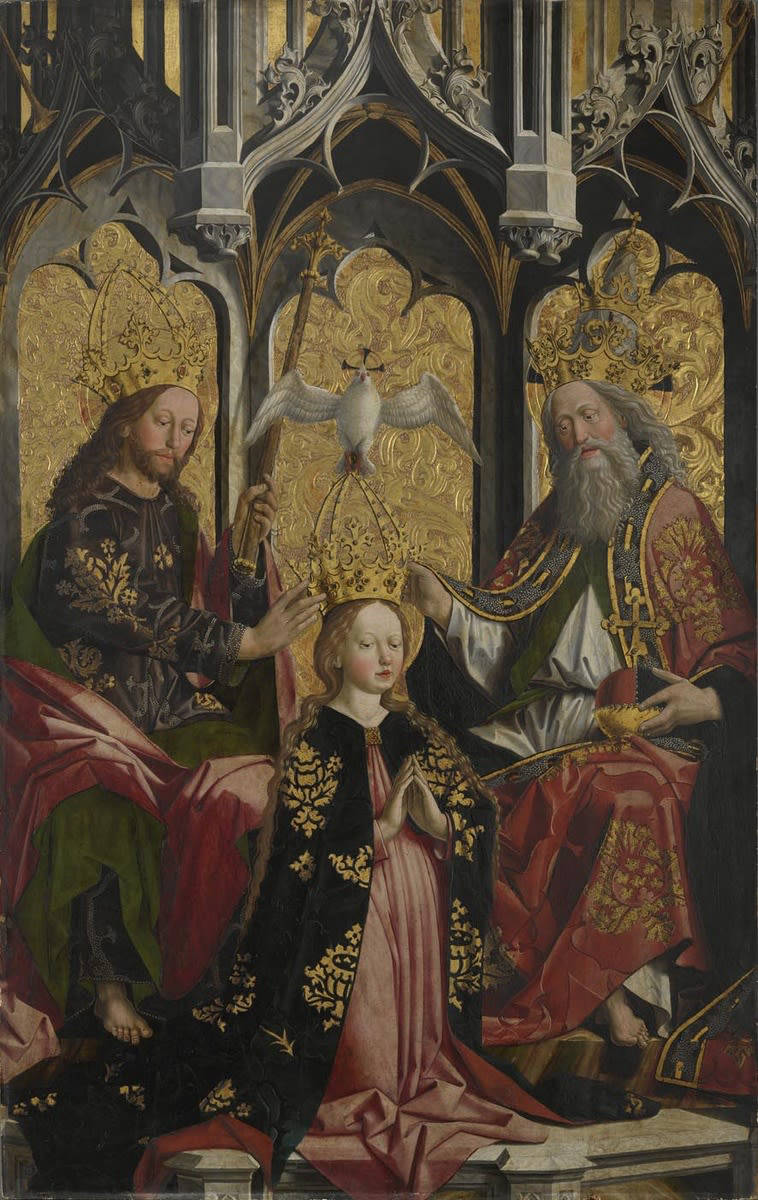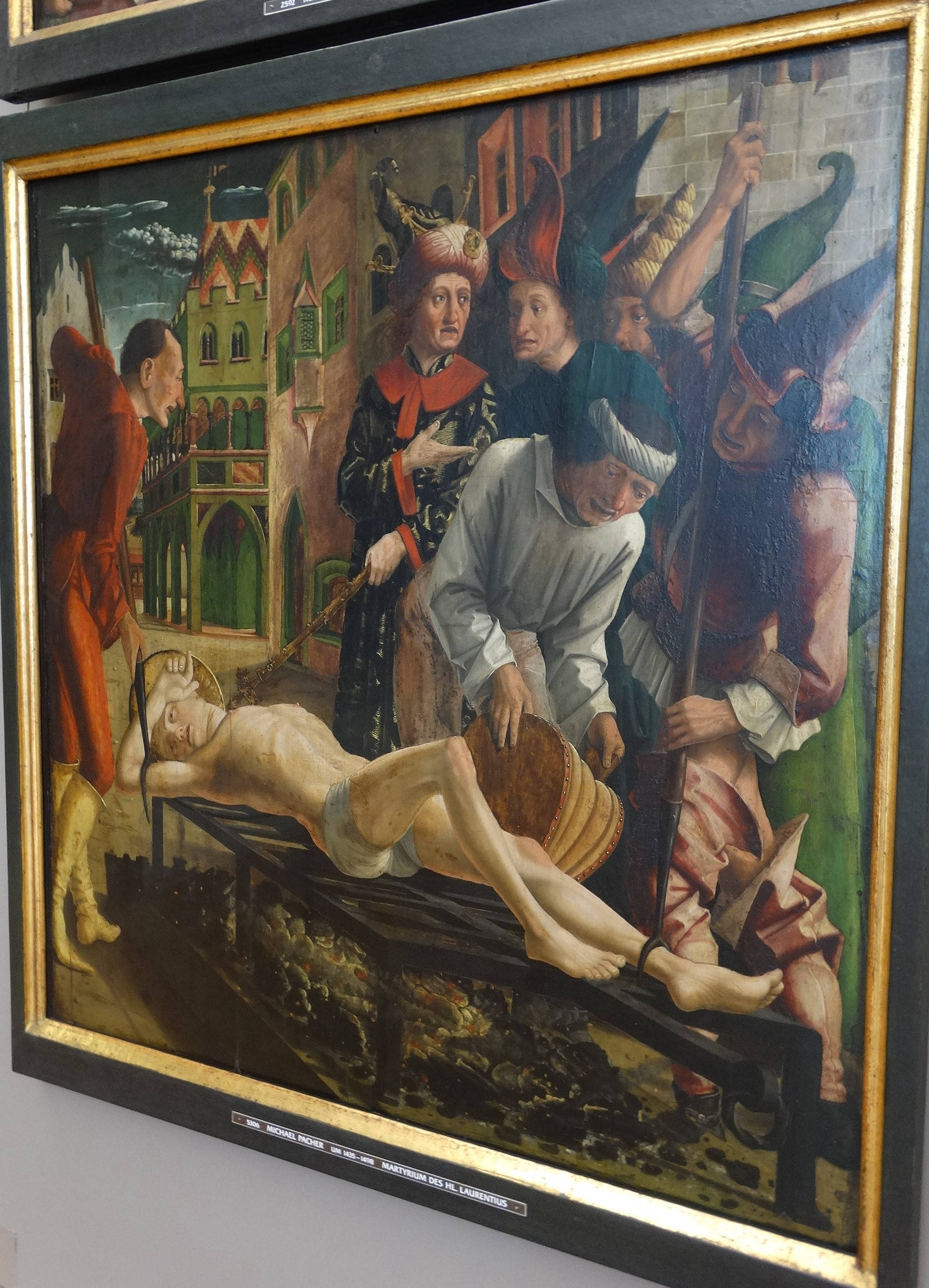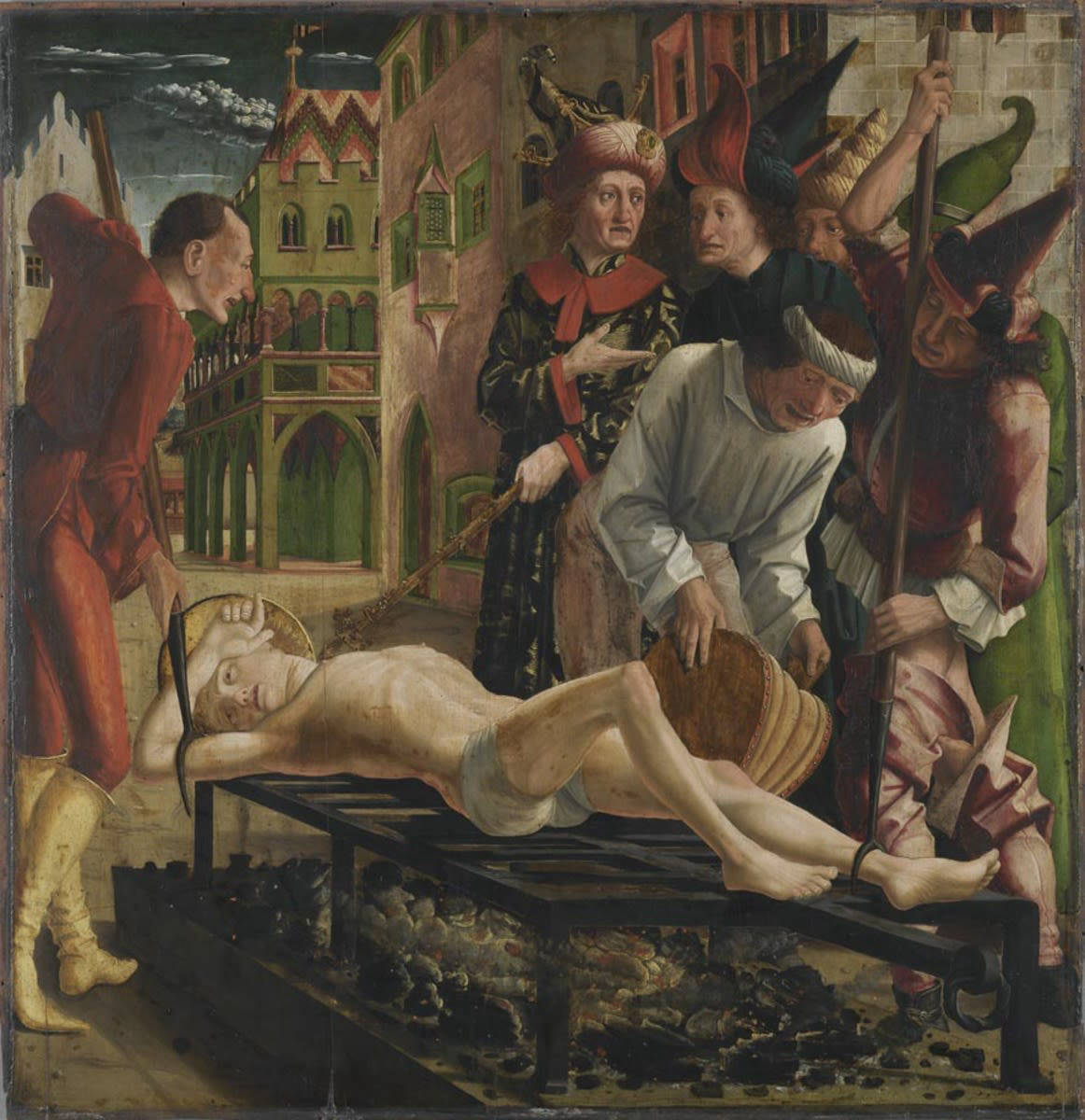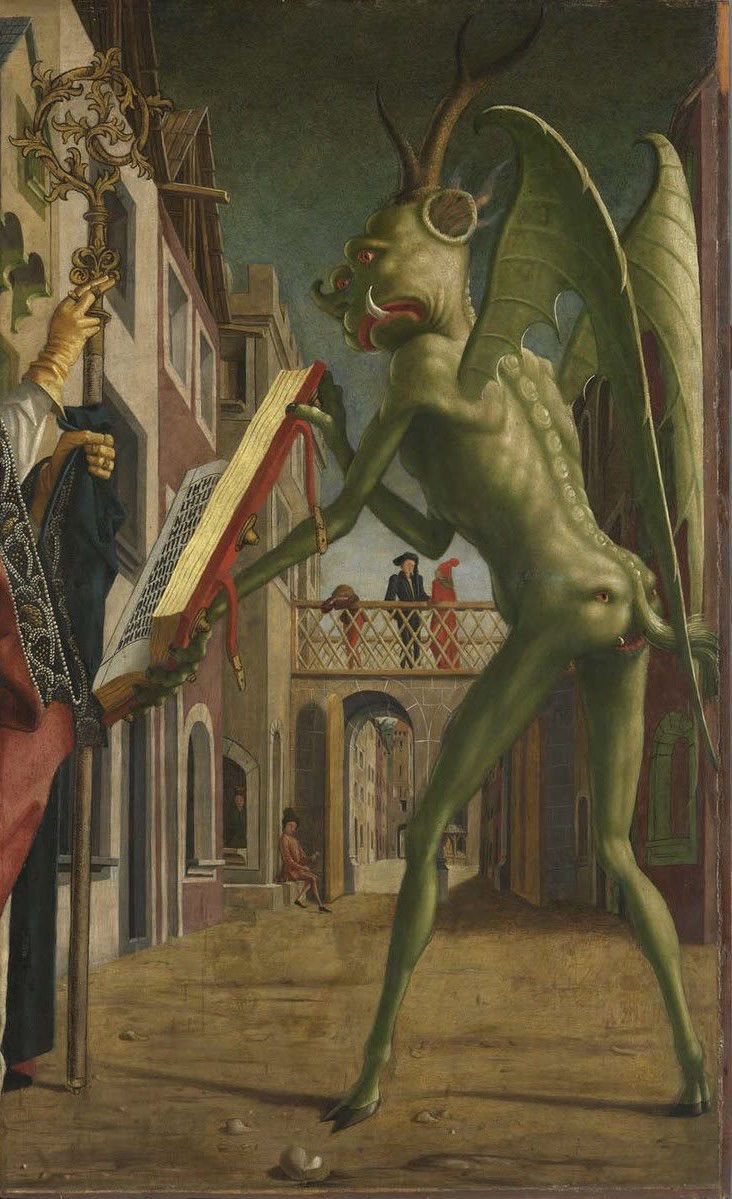
Michael Pacher, c.(1435–died 1498),
was an Austrian or German painter and sculptor from Tyrol active during the second half of the fifteenth century. He was one of the earliest artists to introduce the principles of Renaissance painting into Germany. Pacher was a comprehensive artist with a broad range of sculpting, painting, and architecture skills producing works of complex wood and stone. He painted structures for altarpieces on a scale unparalleled in North European art. Pacher's masterpiece, the St. Wolfgang Altarpiece (1471–1481), is considered one of the most remarkable carved and painted altar shrines in all of European art. It contains scenes from the life of Jesus and the Virgin Mary. Pacher's influence was primarily North Italian, and his work shares characteristics with that of painters such as Andrea Mantegna. German influences, however, are also evident in his work, especially in his wood sculpture. The displayed painting is a crop from: Church fathers altar, wing outside St. An angel appears to Sigisbertus with the heart of St. Augustine (1480).
